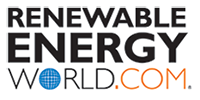 To sustainably power electronics by converting mechanical energy into electricity, energy storage is essential to supply a stable regulated electric output, something traditionally realized by a direct connection between the two components through a rectifier. Unfortunately, this may lead to low energy-storage efficiency. However, a new article in Nature Communications shows how to design a charging cycle to maximize energy-storage efficiency by modulating the charge flow in the system. This is demonstrated on a triboelectric nanogenerator TENG with a motion-triggered switch.
To sustainably power electronics by converting mechanical energy into electricity, energy storage is essential to supply a stable regulated electric output, something traditionally realized by a direct connection between the two components through a rectifier. Unfortunately, this may lead to low energy-storage efficiency. However, a new article in Nature Communications shows how to design a charging cycle to maximize energy-storage efficiency by modulating the charge flow in the system. This is demonstrated on a triboelectric nanogenerator TENG with a motion-triggered switch.
IDTechEx notes that TENG harvesting was only invented five years ago and yet first commercial products using TENGs will be sold this year. The energy storage in a TENG circuit needs to be more efficient and even physically integrated to maximise market potential. Theoretical and experimental comparisons have now verified that the new charging cycle can enhance the charging rate, improving maximum energy-storage efficiency by up to 50% and saturation voltage by at least a factor of two.
One can now store the energy harvested by TENGs utilizing ambient mechanical energy, such as vibration, to drive portable, wearable and implantable electronics – all growing areas of activity.
Click Here to Read Full Article
read more
 Saft explains how microgrids that combine diesel generators, renewable energy resources and lithium-ion (Li-ion) energy storage can enhance security of supply while reducing fuel costs and greenhouse gas emissions. When an energy storage system (ESS) is added, an operator can maximize the contribution of renewables, increasing the penetration of PV power and allowing diesel-off operation. It is possible to realize fuel savings of 50 to 75 percent. Li-ion battery systems have emerged as the technology of choice for energy storage. This is due to their high energy density that enables significant levels of storage capacity to be packed into a relatively compact footprint. Li-ion ESSs are now able to store energy at the megawatt scale, and integrated containerized systems can be connected in parallel to deliver multiple megawatt-hour storage capacity.
Saft explains how microgrids that combine diesel generators, renewable energy resources and lithium-ion (Li-ion) energy storage can enhance security of supply while reducing fuel costs and greenhouse gas emissions. When an energy storage system (ESS) is added, an operator can maximize the contribution of renewables, increasing the penetration of PV power and allowing diesel-off operation. It is possible to realize fuel savings of 50 to 75 percent. Li-ion battery systems have emerged as the technology of choice for energy storage. This is due to their high energy density that enables significant levels of storage capacity to be packed into a relatively compact footprint. Li-ion ESSs are now able to store energy at the megawatt scale, and integrated containerized systems can be connected in parallel to deliver multiple megawatt-hour storage capacity. Solar power is potentially the greatest single energy source outside of controlled nuclear fusion, but the Sun is literally a fair weather source that relies on daytime and clear skies. To make solar energy a reliable, 24-hour source of energy, a team of scientists at Sweden’s Chalmers University of Technology in Gothenburg is developing a liquid energy storage medium that can not only release energy from the Sun on demand, but is also transportable.
Solar power is potentially the greatest single energy source outside of controlled nuclear fusion, but the Sun is literally a fair weather source that relies on daytime and clear skies. To make solar energy a reliable, 24-hour source of energy, a team of scientists at Sweden’s Chalmers University of Technology in Gothenburg is developing a liquid energy storage medium that can not only release energy from the Sun on demand, but is also transportable. Scientists in China and the United States are working on a novel way to kill two birds with one stone: capturing carbon-dioxide pollution to use in an energy-storage system that can back up clean sources like solar and wind.
Scientists in China and the United States are working on a novel way to kill two birds with one stone: capturing carbon-dioxide pollution to use in an energy-storage system that can back up clean sources like solar and wind. Energy storage lies at the heart of grid digitisation and is part of a larger trend of technologies that is disrupting South Australia’s network for the better, according to Terry Teoh, General Manager of Engineering at ZEN Energy.
Energy storage lies at the heart of grid digitisation and is part of a larger trend of technologies that is disrupting South Australia’s network for the better, according to Terry Teoh, General Manager of Engineering at ZEN Energy. The University of Hawaii-Manoa Cancer Center and John A. Burns School of Medicine
The University of Hawaii-Manoa Cancer Center and John A. Burns School of Medicine Time is running out for stakeholders offering comments to Washington’s Utilities and Transportation Commission (WUTC) on its draft policy statement regarding how energy storage is treated by investor-owned utilities’ (IOUs) in their integrated resource planning (IRP).
Time is running out for stakeholders offering comments to Washington’s Utilities and Transportation Commission (WUTC) on its draft policy statement regarding how energy storage is treated by investor-owned utilities’ (IOUs) in their integrated resource planning (IRP).  HOW much power does a tweetstorm involving two tech tycoons, the prime minister of Australia and 8.5m Twitter followers generate? Enough, at least, to supercharge a debate about the future role of batteries in the world’s energy mix.
HOW much power does a tweetstorm involving two tech tycoons, the prime minister of Australia and 8.5m Twitter followers generate? Enough, at least, to supercharge a debate about the future role of batteries in the world’s energy mix. The Prosper-Haniel hard coal mine in North-Rhine Westaphalia is a show piece of the right way forward. It is a hard coal mine that dates back to 1863, and thankfully in 2018 it will never produce coal again.
The Prosper-Haniel hard coal mine in North-Rhine Westaphalia is a show piece of the right way forward. It is a hard coal mine that dates back to 1863, and thankfully in 2018 it will never produce coal again. According to market research firm IHS, the energy storage market is set to “explode” to an annual installation size of 6 GW in 2017, exceeding 40 GW by 2022. Such forecasts reveal a huge jump from an initial base of only 0.34 GW installed in 2012 and 2013. Here is a list of seven energy storage disruptors that are innovating and changing the industry as we know it:
According to market research firm IHS, the energy storage market is set to “explode” to an annual installation size of 6 GW in 2017, exceeding 40 GW by 2022. Such forecasts reveal a huge jump from an initial base of only 0.34 GW installed in 2012 and 2013. Here is a list of seven energy storage disruptors that are innovating and changing the industry as we know it:
Recent Comments